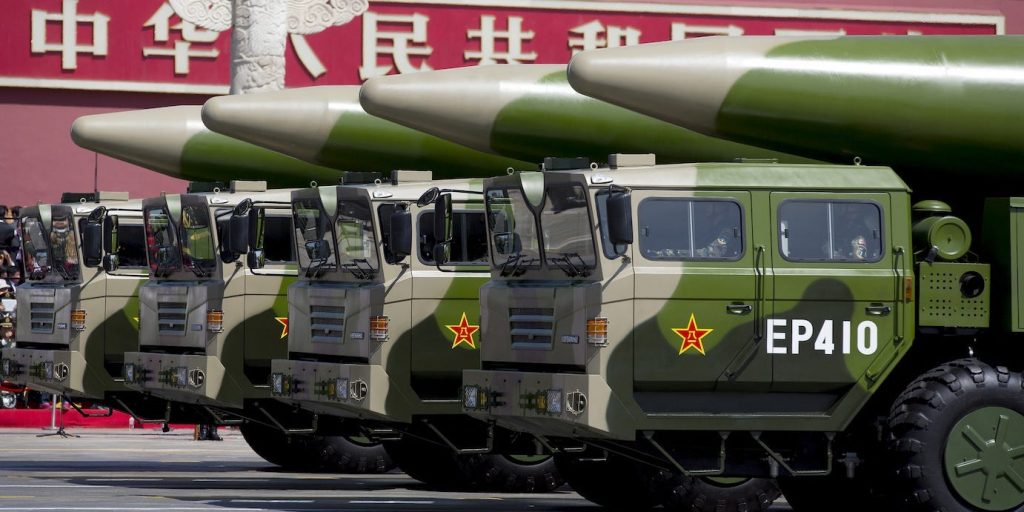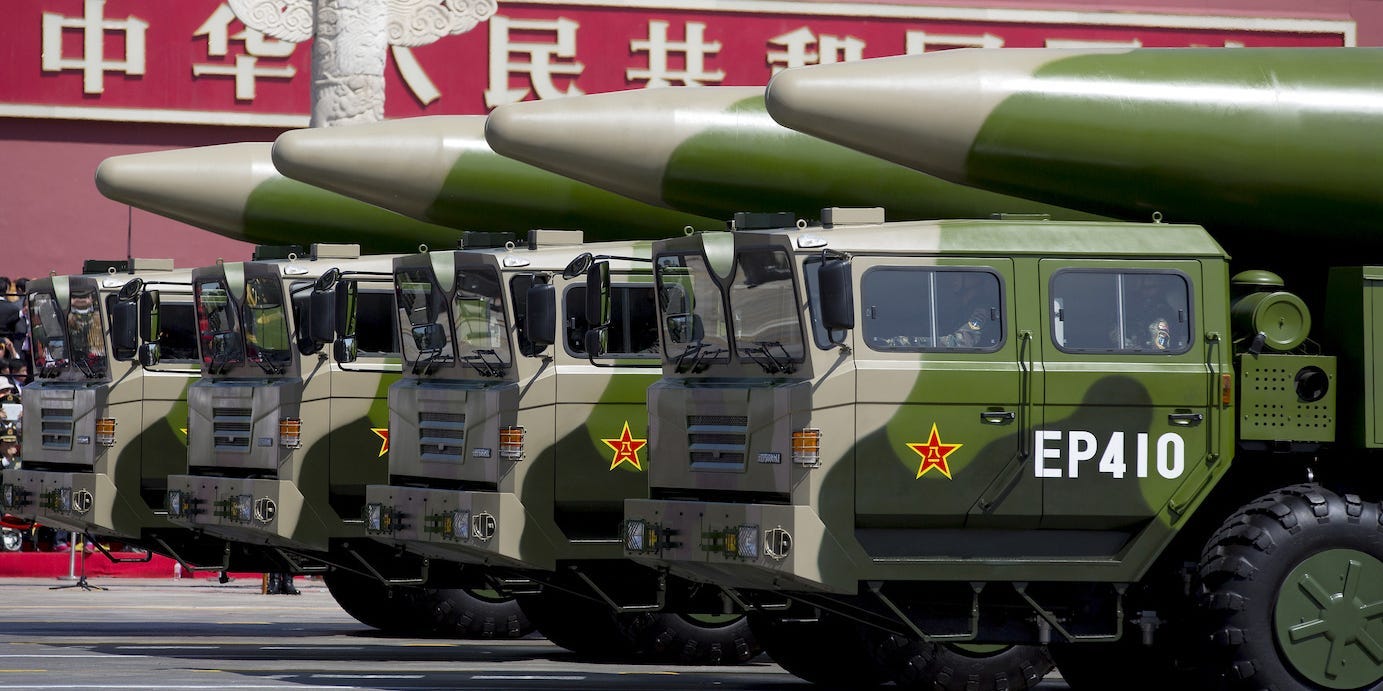
Andy Wong/Pool via REUTERS
- The apparent growth of China's ICBM force has received international attention in recent weeks.
- That growth is only one facet of China's rapid and ongoing military expansion.
- That expansion worries China's neighbors, which are now expanding their own missile arsenals.
- See more stories on Insider's business page.
Recent reports based on satellite imagery show that China is building as many as 230 new silos to hold intercontinental ballistic missiles that could deliver nuclear warheads as far away as the US.
The construction may indicate a massive expansion of those capabilities and would be the latest chapter in China's meteoric military growth, which, along with Beijing's aggressive actions in places like the South China Sea, has already sparked a different kind of missile race.
Countries in the Indo-Pacific region are acquiring or expanding their own arsenals of long-range missiles, largely with China in mind. Those missiles are conventionally armed but also have offensive capability.
"In response to China's past and recent rapid expansion of missile capabilities, there is indeed a missile race ongoing in the Indo-Pacific," said Patrick Cronin, the Asia-Pacific Security chair at the Hudson Institute think tank.
Those countries – Cronin cited South Korea and "the Quad" of India, Japan, Australia, and the US – see the threat China poses differently, but the cumulative effect is clear. "It's a full acceleration of a missile race, frankly," Cronin told Insider.
Hedging their bets
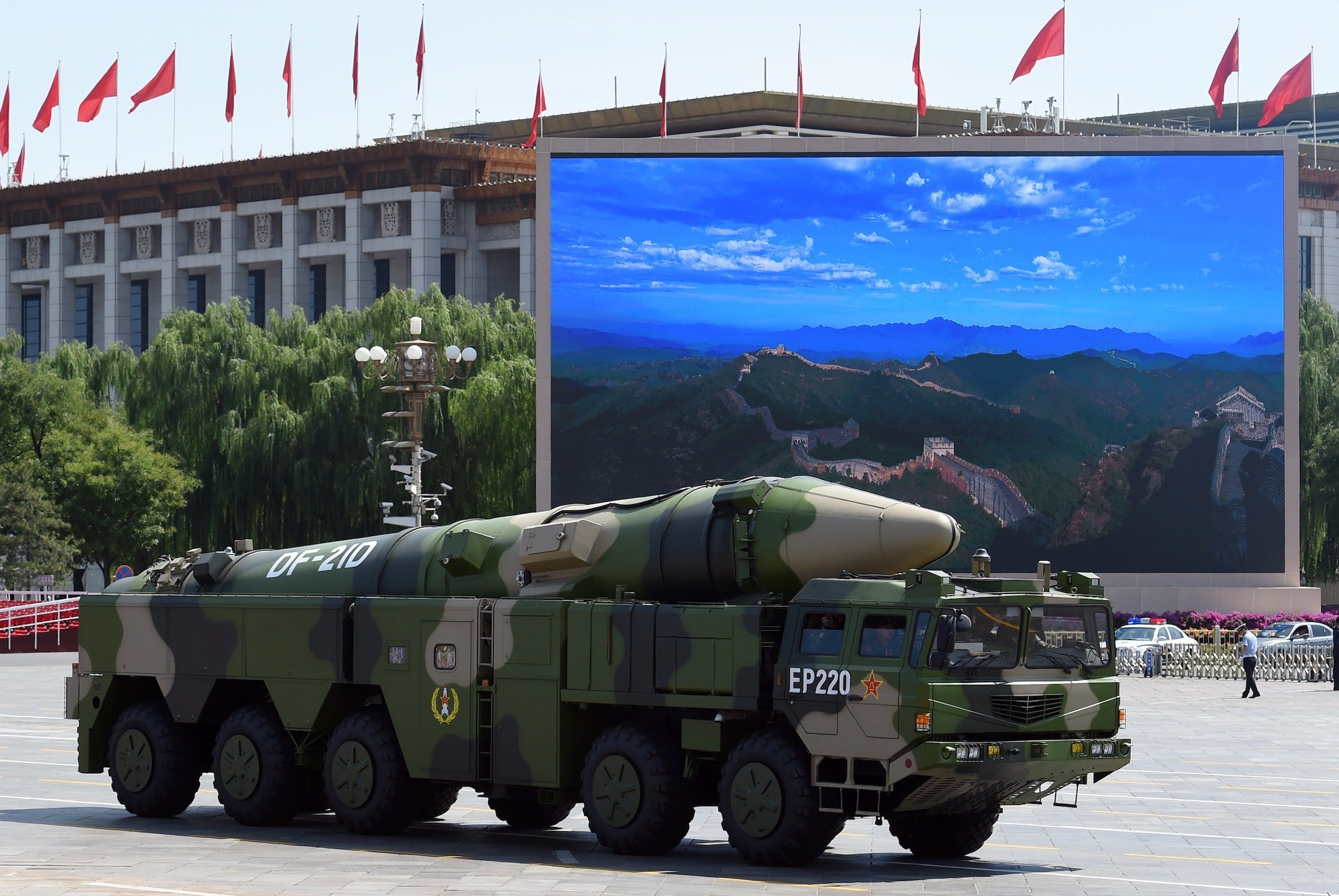
GREG BAKER/AFP via Getty Images
China's military, particularly its navy and air force, is now one of the largest in the world and is developing the capability to conduct and sustain long-range operations.
The missiles that China is fielding, particularly the DF-21 and DF-26, also erode the physical buffer that countries like Australia and the US have long seen as an advantage.
"The tyranny of distance is no longer quite as tyrannical. It's not so distant either," Cronin said. "So all of these countries have to start filling in their own offensive capabilities."
US allies in the region, particularly Japan and South Korea, were long able to rely on the US military for their defense, but uncertainty over the US's commitment has prompted them to bolster and diversify their own firepower.
"The US has, over time, both demonstrated a great ability to defend allies but also occasional lapses to follow-through," Cronin said. "It's entirely possible that these countries don't want to rely exclusively on the US. They want to hedge their bets."
Growing arsenals
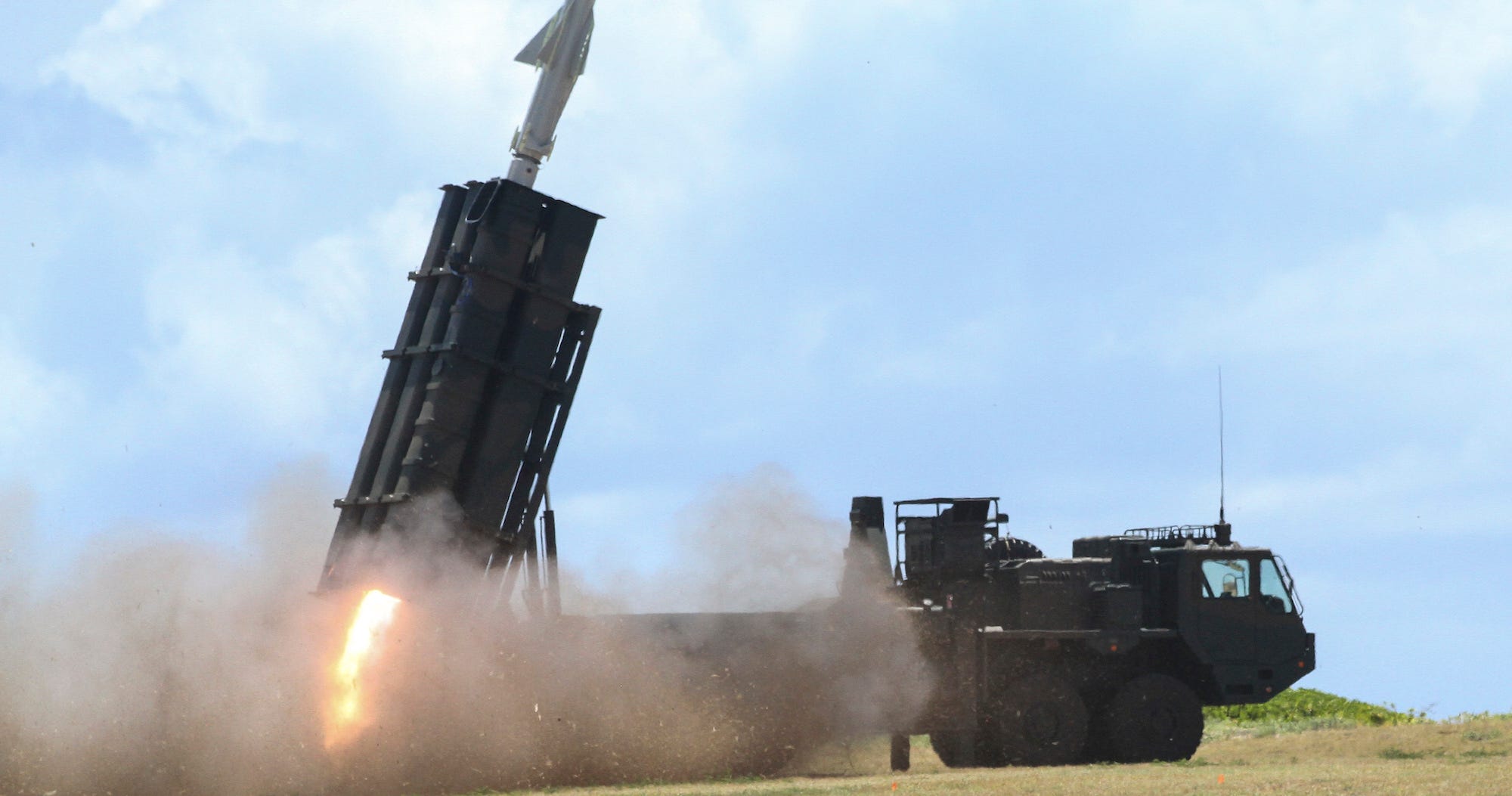
US Army/Capt. Rachael Jeffcoat
Worried about Chinese activity in its waters, Japan is increasing the range of its Type 12 anti-ship cruise missiles from about 200 km to 900 km, with the eventual goal of 1,000 km. Tokyo is also putting Type 12s and anti-aircraft batteries in the Ryukyu Islands, which sit between Japan and Taiwan.
Japan has plans for two hypersonic weapons: the Hypersonic Cruise Missile and the Hyper Velocity Gliding Projectile. The HVGP is expected to have a range of about 500 km and a warhead designed to penetrate the decks of aircraft carriers. Tokyo hopes to deploy it by 2026.
Japan has indicated that it wants long-range missiles that can be fired from its aircraft and ships, and its recently published defense white paper specifically mentions the procurement of stand-off missiles as a priority.
Australia is pursuing a military buildup as it moves into what Prime Minister Scott Morrison last year called "a new and less benign strategic area" amid competition in the region. Morrison said Australia will expand its plans to acquire long-range maritime and land strike capabilities.
Canberra is buying 200 Long Range Anti-Ship Missiles from the US and is investing $1 billion to build guided missiles domestically. That investment includes a ship-launched version of the LRASM and hypersonic weapons that will be developed in consultation with the US.
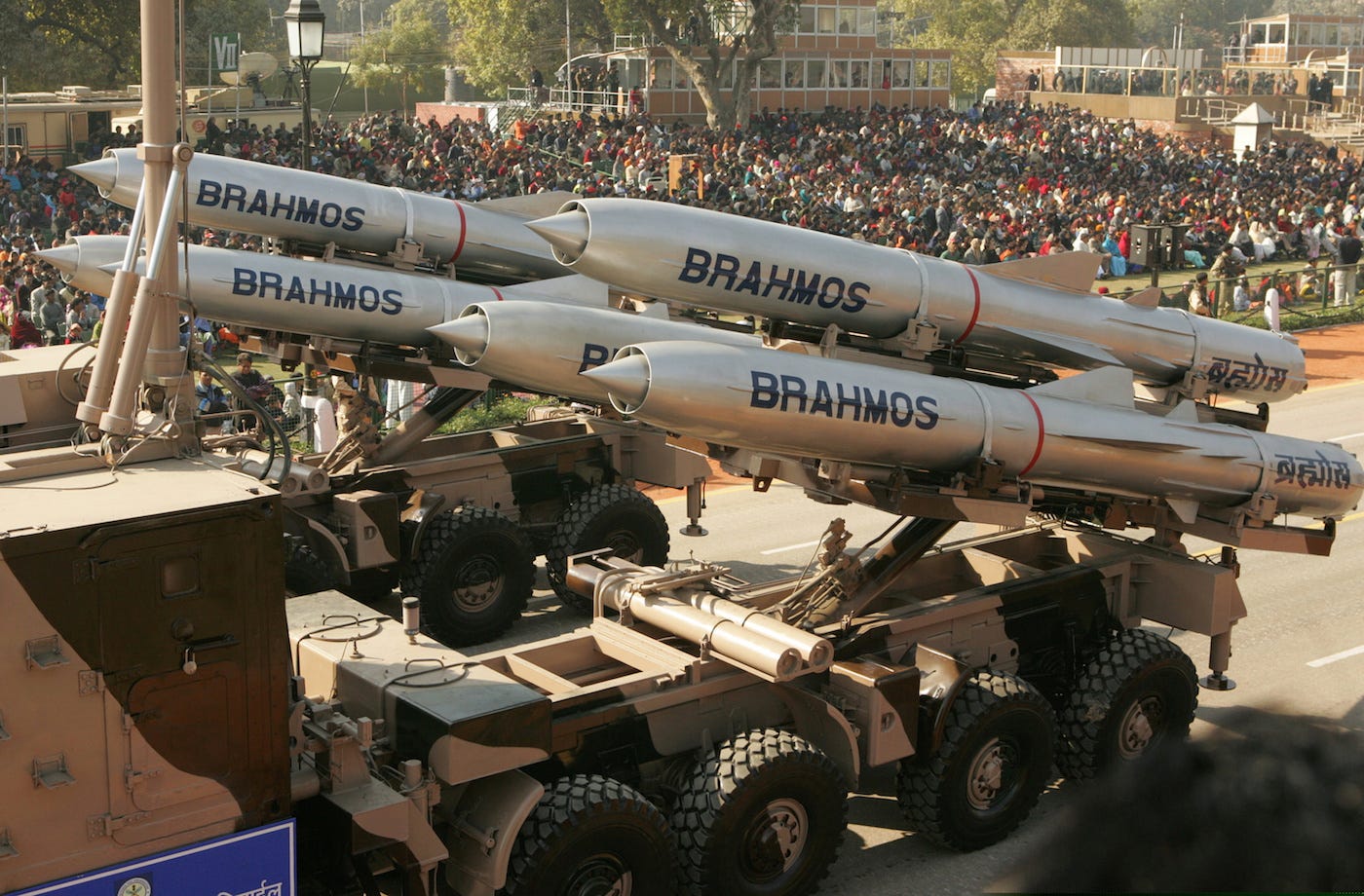
REUTERS/Kamal Kishore
India, too, is continuing to develop its own missile arsenal to counter China.
It is acquiring new long-range anti-aircraft and cruise missiles, developing new submarine-launched ballistic missiles for its new Arihant-class nuclear-powered ballistic-missile subs, and working on a hypersonic variant of its Brahmos cruise missile. India is also increasing the range of the Brahmos again, this time from 400 km to 800 km.
In July, South Korea successfully tested a sub-launched ballistic missile for the first time, firing it from an underwear barge. The missile, believed to be a Hyunmoo-2B, is reported to have a range of 500 km and will likely be fitted on future Dosan Ahn Chang Ho-class submarines.
Following the US's recent agreement to lift restrictions that limited South Korea's missiles to a range of 800 km, Seoul can now build longer-range missiles.
This missile proliferation isn't limited to the major Indo-Pacific powers.
India is looking to export the Brahmos to other countries in the region, including the Philippines and Vietnam, both of which have maritime disputes with China.
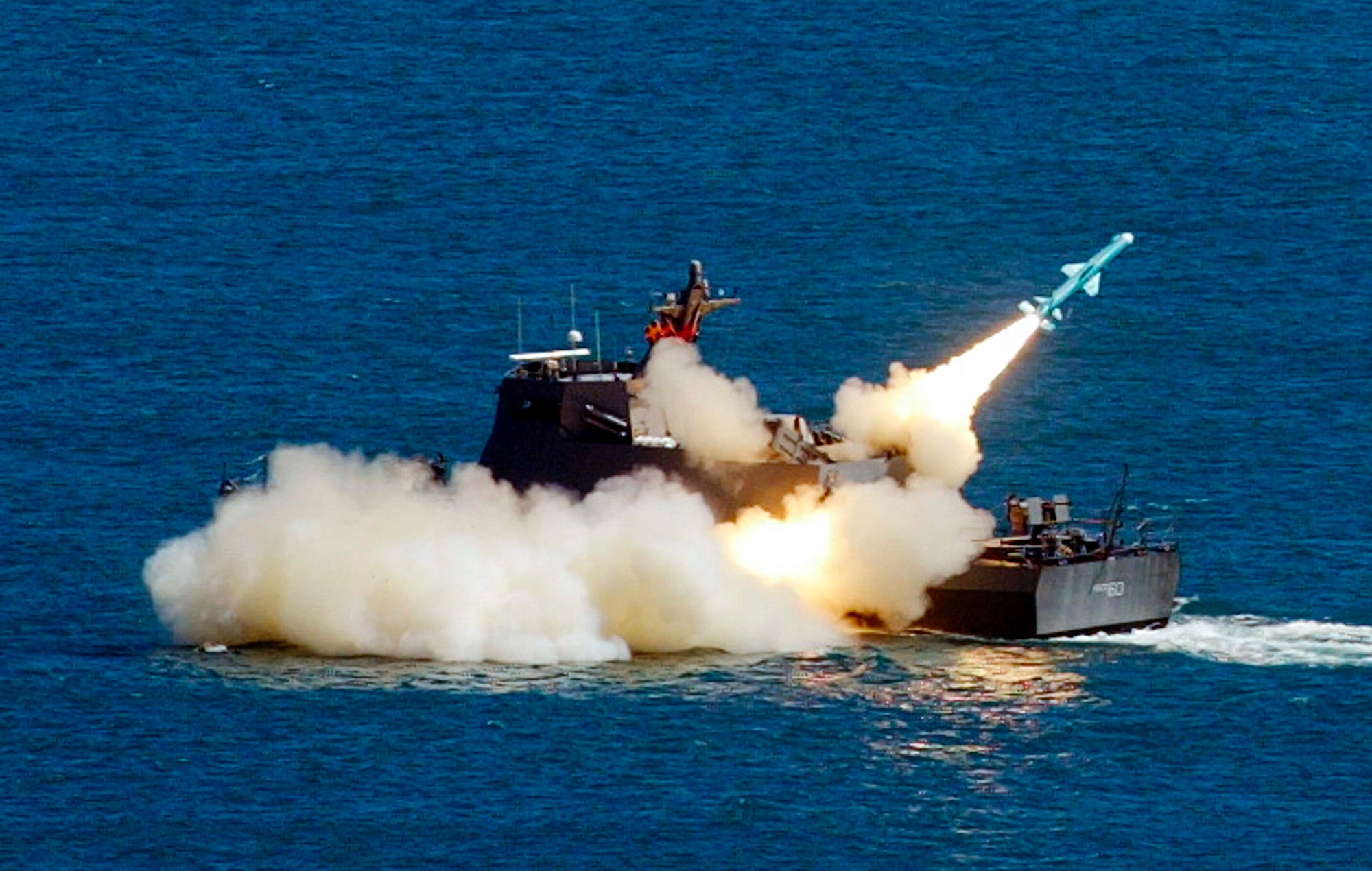
REUTERS/Simon Kwong
Taiwan, which hopes to buy American cruise missiles, has extended the range of its Hsiung Feng IIE cruise missiles to 1,200 km and is developing another missile, the Yun Feng, with a standard range of 1,200 km and an extended range of 2,000 km.
The sheer number of missiles in strategic locations along the Indo-Pacific, as well as those that can be launched from aircraft, ships, and submarines, could give the US and its allies their own form of anti-access/area denial capability, especially if their efforts are coordinated.
"That means that if the Chinese think they can get away with some aggression with relatively little risk, they're going to be very badly mistaken," Cronin said.
Cronin noted that while missile capabilities are an "essential" and "pointed" part of the competition with China, they are not the most important part. The countries in question also remain focused on deterrence, not aggression, even as they hurry to improve and expand those capabilities.
"People have been reluctant to say there's an arms race in Asia. Maybe an arms walk," Cronin said. "But the arms walk is getting pretty fast."
